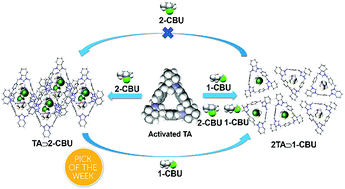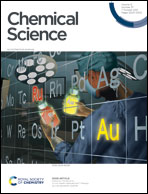Tuning the porosity of triangular supramolecular adsorbents for superior haloalkane isomer separations†
Abstract
Distillation-free separations of haloalkane isomers represents a persistent challenge for the chemical industry. Several classic molecular sorbents show high selectivity in the context of such separations; however, most suffer from limited tunability or poor stability. Herein, we report the results of a comparative study involving three trianglamine and trianglimine macrocycles as supramolecular adsorbents for the selective separation of halobutane isomers. Methylene-bridged trianglamine, TA, was found to capture preferentially 1-chlorobutane (1-CBU) from a mixture of 1-CBU and 2-chlorobutane (2-CBU) with a purity of 98.1%. It also separates 1-bromobutane (1-BBU) from a mixture of 1-BBU and 2-bromobutane (2-BBU) with a purity of 96.4%. The observed selectivity is ascribed to the thermodynamic stability of the TA-based host–guest complexes. Based on single crystal X-ray diffraction analyses, a [3]pseudorotaxane structure (2TA⊃1-CBU) is formed between TA and 1-CBU that is characterized by an increased level of noncovalent interactions compared to the corresponding [2]pseudorotaxane structure seen for TA⊃2-CBU. We believe that molecular sorbents that rely on specific molecular recognition events, such as the triangular pores detailed here, will prove useful as next generation sorbents in energy-efficient separations.

- This article is part of the themed collections: Most popular 2021 supramolecular chemistry articles, 2021, 2021 ChemSci Pick of the Week Collection and 2021 Chemical Science HOT Article Collection


 Please wait while we load your content...
Please wait while we load your content...